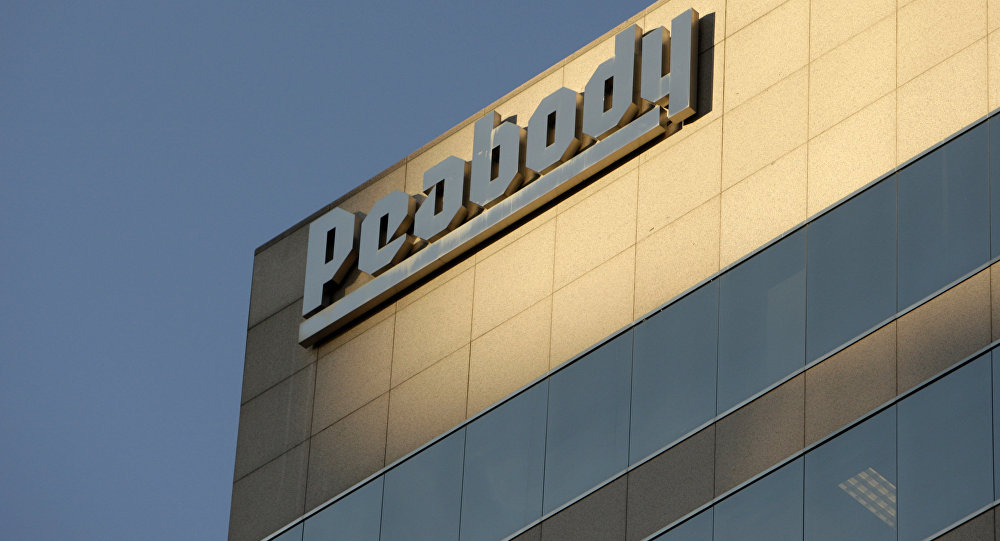
As US coal production struggles amid low prices and weak overseas demand, domestic environmental regulations have undermined the commercial performance of almost half of the industry, resulting in bankruptcies and job losses across the nation, with Peabody Energy Corp. exiting the US market through a bankruptcy filing serving as a fresh example.
Kristian Rouz — Peabody Energy Corp., the US-based world’s largest privately-owned coal producer, filed for Chapter 11 bankruptcy on Wednesday as coal prices slumped dramatically amidst the ongoing slowdown of the Chinese economy and the rife environmentalist drive in the US. Low coal prices stemming from falling demand and significant debt imbursement in the recent months in order to finance expansion into Australia rendered Peabody unable to service its obligations. The announcement has badly shaken the already crumbling US energy sector, signaling a possible end of the era dominated by traditional fuels. Aside of its commercial insolvency, Peabody succumbed to both stricter governmental regulations at home and disruptions in international trade stemming from a stronger dollar and struggling Asian traditional importers of coal.
Peabody Energy Corp. filed petitions for Chapter 11 bankruptcy protection for most of its US divisions on April 13 in the Eastern District Court of Missouri, and while the proceedings last, the company’s mines and offices will continue their operation. The largest private sector miner employs roughly 8,000 personnel and services customers in 25 countries.
“The outlook for coal players remains bleak,” said Sandra Chow of Singapore-based CreditSights Inc. “Any recovery remains a long way from here.”
According to court documents, Peabody has assets and debts totaling between $10 bln and $50 bln. The company’s commercial performance began to deteriorate in 2014 amidst the accelerated downturn in commodity prices, and the top management’s decision to expand into Australia in 2011 turned out to be fatal. The declines in coal imports in mainland China and Brazil hit Peabody’s revenues, whilst domestic environmental regulations undermined US demand for coal with power plants favoring cleaner natural gas.
“This was a difficult decision, but it is the right path forward for Peabody,” CEO Glenn Kellow said in a statement. “This process enables us to strengthen liquidity and reduce debt, build upon the significant operational achievements we’ve made in recent years and lay the foundation for long-term stability and success in the future.”
Peabody acquired Australia’s energy company Macarthur in 2011, having borrowed some $5.1 bln in order to secure the deal. The move was supposed to bolster Peabody’s presence in the Asian markets supplying coal to industrial enterprises of the likes of mainland China and Vietnam. Yet, as prices for coal slumped 75% ever since, Peabody found itself on the skids.
However, Australian divisions of the company are not listed in the court filings, meaning the bankruptcy process would only affect Peabody’s US operation. In other words, the company is leaving the US market, not least due to prohibitive regulations, whilst still maintaining its role as coal supplier to Asian manufacturers no matter the prices, which might as well partially recover soon.
According to Bloomberg Intelligence estimates, demand for coal in the US would weaken further, whilst growing in India and Southeast Asia, further supporting allegations of Peabody’s bankruptcy filing as part of a larger pivot in business strategy. In the US, coal accounted for some 28% of electricity generation, whilst internationally the average figure is 40%. Exiting the US during the period of low prices through comfortable bankruptcy proceedings seems to be easy: the company secures itself a greater share of the growing market overseas, while eliminating the burdensome US jobs with little pain.
US environmental regulations have effectively undermined domestic coal production since its peak in 2008, from 1.17 bln metric tons to 752.5 mln in 2016.
According to Fitch Ratings observations made in February, Peabody faced “continued competition in domestic markets from cheap natural gas and bankrupt coal producers, expectation of a delayed recovery in the seaborne metallurgical coal market from very low levels, and prospects for further weakness in the Asia Pacific steam coal markets.”
The US coal industry is suffering its worst crisis in decades, with producers accounting for 45% of domestic coal output having gone bankrupt by 2014. The trend has exacerbated ever since due to lackluster commercial performance. Overall, electricity would only become more expensive for US consumers, an ugly spillover of the ‘clean energy’ drive eliminating intra-sectoral competition in the domestic market.